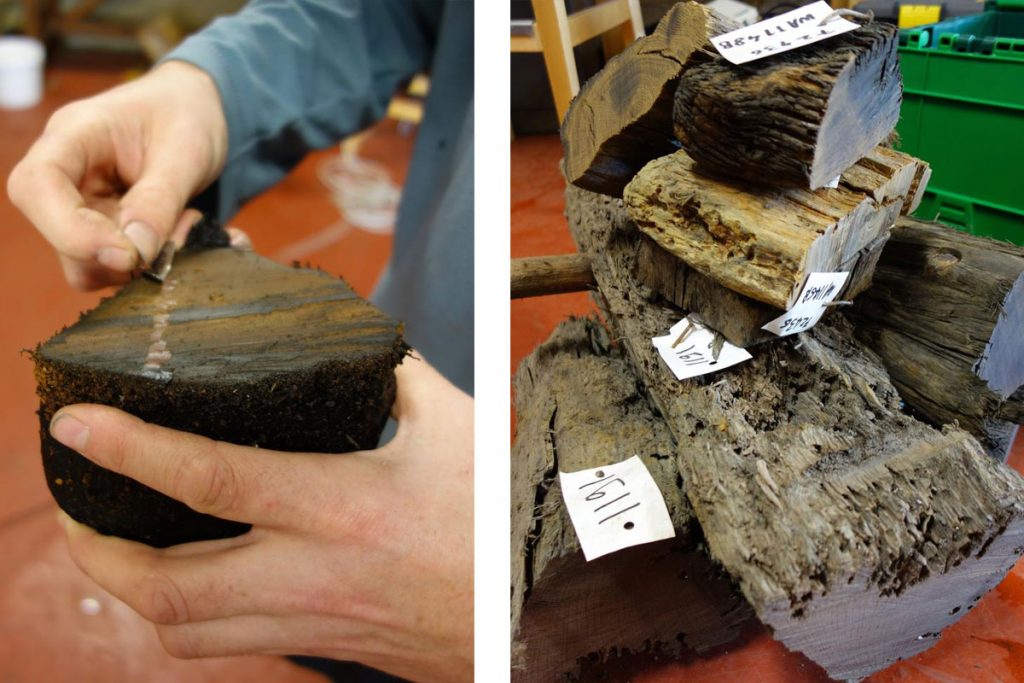Dendrochronology specialists Dr Roderick Bale and Nikki Vousden examined 40 wooden artefacts retrieved from the Thames Estuary seabed and collected samples for further detailed examination. The study will take place at their laboratories in the Department of Archaeology, History and Anthropology at the University of Wales Trinity Saint David, Lampeter.
The timber artefacts had been stored in tanks of water at Wessex Archaeology to prevent them from drying out and were carefully removed from their water tanks so that the experts could assess their potential for dendrochronological dating.
This involves taking a section through the timber to allow the annual growth rings to be counted, to show the number of years the tree was alive and to measure the thickness of the rings to show the yearly growth conditions. In general, it is preferable to have at least 50 tree rings to get reliable results. As it is a destructive testing method, experts must be fairly certain that the artefact has enough tree rings to provide a date, otherwise important information may be lost.
Once the results are back, Wessex Archaeology staff will be able to compare the information about where the timbers came from, when the trees were felled and when the artefacts were made, with specific local databases. In this way, it will add to the information available regarding some of the wrecks that have been discovered in the Thames Estuary, and perhaps even shed light on their maritime histories.
By Peta Knott, Archaeologist
